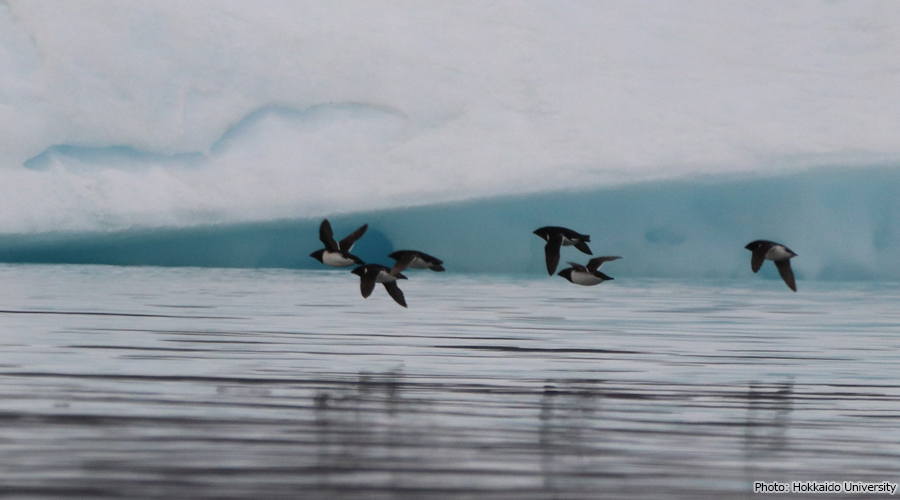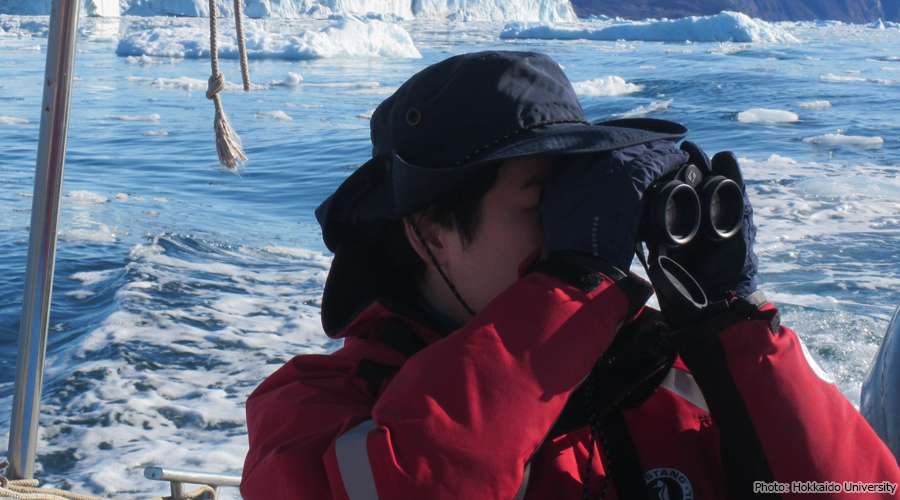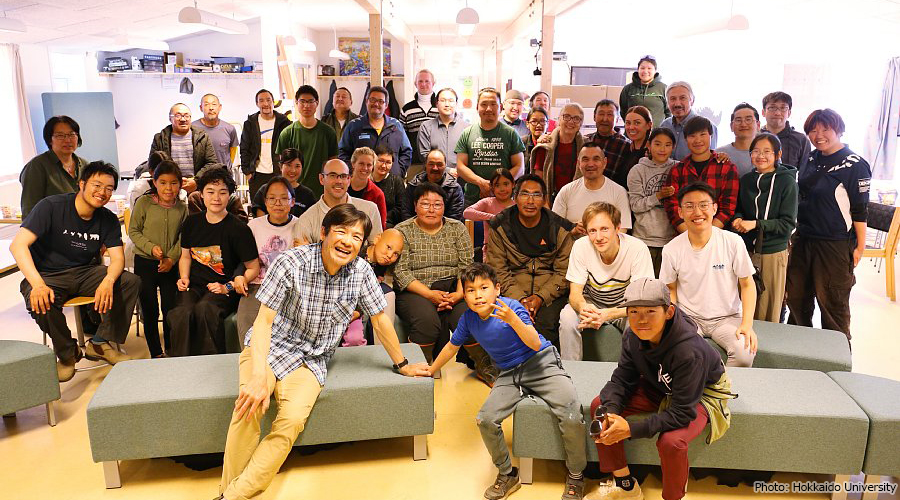Field research on seabirds and the coastal marine ecosystem in northwestern Greenland
Overseas Fellowship Program Participant:FY2024 Short-Term Program
Asuka Yushima (Hokkaido University)
Glaciers are predicted to melt more rapidly as a response to climate change, especially in northwestern Greenland. Accelerated glacier melting may have consequences on coastal marine ecosystems through changes in oceanographic properties. Understanding the relationship between glaciers and the foraging activity of marine predators such as seabirds and glaciers is crucial for assessing the effects of these changes.
My research topic focuses on the relationship between seabirds and the marine environment surrounding tidewater glaciers. Seabirds have a variety of foraging behaviors, such as surface-feeding and diving. Surface-feeding seabirds are known to form large foraging aggregations near calving fronts of tidewater glaciers. However, the relationship between environmental factors and the distribution of divers near tidewater glaciers is not well known.

Thanks to the ArCS II Overseas Fellowship Program, I had the opportunity to travel to northwestern Greenland to gather data on how different seabird species respond to various environmental factors. We collected data in three fjords located in northwestern Greenland: Bowdoin Fjord, MacCormick Fjord, and Robertson Fjord. We conducted seabird observations, oceanographic measurements, and plankton sampling in each fjord. We observed seabirds from a boat and recorded the species, number, and behavior. We measured surface seawater temperature, salinity, and turbidity using a CTD profiler. We sampled surface water to collect phytoplankton. We collected zooplankton by towing a plankton net.


We held a workshop in Qaanaaq alongside others involved in research in northwestern Greenland to present the results of our research and exchange information with the local community. I shared the results of my undergraduate research on seabird distribution in Bowdoin Fjord and Robertson Fjord. The local people showed a strong interest in our research, especially regarding issues directly impacting their livelihoods. I noticed that one of the presenters was particularly effective at sharing the results of their research and exchanging ideas with the locals. I realized that this was due to the incorporation of many local terms into their presentation. This use of the local language not only made the content more accessible to the audience but also encouraged greater participation in the discussion. I realized the importance of learning and using the local language to connect with people.

Currently, I am analyzing the data I collected. My goal is to quantify the response of each seabird species to habitat characteristics and to anticipate the relationship between seabirds and altered oceanographic conditions. I am eager to share the results of my research with the local community as soon as possible.
Finally, I express my deepest gratitude to everyone involved in the ArCS II Overseas Fellowship Program for making this valuable experience possible.
